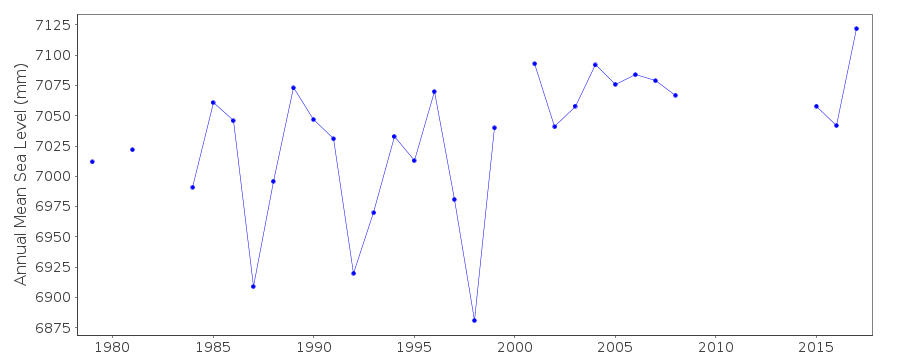GLOSS Station Handbook – Kapingamarangi, Caroline Is.
The GLOSS Station Handbook is currently being re-designed and upgraded.
Until a new version is available, the tide gauge station list below from the last version of the Handbook provides links to further details about each tide gauge in the GLOSS Core Network. Click column headings to sort the station list table. Click the GLOSS number buttons to view the station information.
Station information
| General | |
|---|---|
| Gloss number | 117 |
| Station name | Kapingamarangi, Caroline Is. |
| Country | Fed. Micronesia |
| Time zone | 165E, GMT + 11hrs |
| Latitude (+ve N) | 1.1 |
| Longitude (+ve E) | 154.78333 |
| Ocean | Pacific |
| Observation periods | 1978- |
| Responsible country | U.S.A. |
| Authority responsible for tide gauge | Dr. M. Merrifield, University of Hawaii, Dept. of Oceanography, 1000 Pope Road MSB 307, Honolulu, Hawaii 96822, U.S.A. |
| GLOSS contact | Micronesia |
| Committed to GLOSS | Yes |
| Operational | Yes |
| Instrumentation | |
| Float | Yes |
| Pressure | No |
| Bubbler | No |
| Acoustic | No |
| Radar | No |
| Data | |
| Digital data | Yes |
| Additional parameters | None |
| Data acquisition rate | 15 minutes, filtered to hourly values |
| Fast delivery data at UHSLC | Data 029 File format |
| High frequency data at BODC | Data 117 Document 57359 |
| High frequency data at UHSLC | Data 029a Document 029a File format |
| Real-time data available | Yes |
| Real-time data transmitted to GLOSS Fast Centre | |
| Additional parameters (real-time) | None |
| Benchmarks | |
| Tide gauge benchmark | UH1: SS disc set in grey epoxy, no markings, directly over tide staff, 8 inches from edge of quay. |
| Auxiliary benchmarks | UH2: SS disc set in grey epoxy, no markings, 39 ft E of tide house 10 inches from edge of quay. RM2: 3 inch aluminium disc, bearing 5D, 20ft 8 inches from staff at edge of quay. DMA31471: 3 inch aluminium disc, bearing 70D, 49 ft from staff at centre of quay. |
| Data at PSMSL | |
| Annual MSL (RLR) data | RLR 1473 |
| Annual MSL (RLR) plot | |
| MSL method | average of daily values |
| PSMSL code | 1473 |
| Other relevant codes | UHSLC 029 |
| Additional information | |
| Other relevant information | Backup gauge on site: Handar encoder ADR (July 1985-) Daily values calculated using 119-point convolution filter (Bloomfield, 1976) centred on noon applied to the hourly data with respective periods of 95, 50 and 5% amplitude points at 124.0, 60.2 and 40.2 hours. |
| Last updated | 5 December 1993 |

